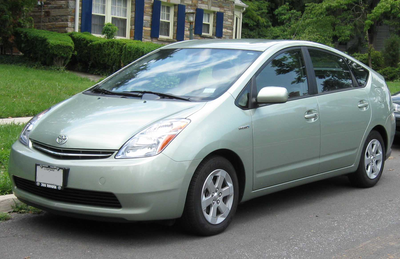Toyota Prius XW20 (Facelift 2005)
Introduction
The Toyota Prius XW20, also known as the second generation Prius, is a hybrid electric vehicle that was manufactured by Toyota from 2003 to 2009. In 2005, Toyota introduced a facelift to the XW20 model, giving it a refreshed and more modern look. This facelift added some key improvements to an already successful and popular hybrid car.
Exterior Design
With the facelift in 2005, the Toyota Prius XW20 received a significant update to its exterior design. The front end of the vehicle was restyled, featuring a new front bumper and grille, giving it a more assertive and stylish appearance. The headlights were also redesigned, incorporating a sleeker look with improved LED technology for better visibility. The overall aerodynamic shape of the XW20 remained, contributing to its impressive fuel efficiency.
Interior Comfort and Features
One of the main enhancements in the facelifted XW20 Prius was the interior comfort and features. Toyota made several improvements to the cabin, including upgraded materials and finishes. The dashboard layout was refined, with more intuitive controls for easy access to various functions. The seats were also improved, providing better comfort and support during long drives. Additionally, Toyota added more sound insulation to reduce road and wind noise, resulting in a quieter and more comfortable driving experience.
Powertrain and Performance
The Toyota Prius XW20 facelift maintained the same powertrain as the pre-facelift model. It featured a combination of a 1.5-liter gasoline engine and an electric motor, delivering a total power output of around 110 horsepower. The hybrid powertrain enabled the Prius to run on either gasoline, electric power, or a combination of both, depending on driving conditions. The XW20 achieved impressive fuel economy, with an average of around 45 miles per gallon, making it an incredibly efficient and eco-friendly vehicle.
Safety and Technology
Toyota placed a strong emphasis on safety in the facelifted XW20 Prius. The updated model featured a range of advanced safety features, including antilock brakes, stability control, and multiple airbags. Additionally, the XW20 was one of the first vehicles to offer an optional advanced driver-assistance system, which included features like adaptive cruise control and lane-keeping assist. The facelift also introduced improved technology features, such as an updated touchscreen infotainment system and a navigation system.
Legacy and Impact
The Toyota Prius XW20 facelift had a profound impact on the automotive industry. It continued the success of its predecessor as one of the best-selling hybrid vehicles worldwide. Toyota's commitment to improving fuel efficiency and reducing emissions with the Prius played a significant role in popularizing hybrid technology. The facelifted XW20 showcased Toyota's dedication to constant improvement, both in terms of design and technology, setting a benchmark for other automakers to follow.
Conclusion
The Toyota Prius XW20 facelift in 2005 brought notable improvements to an already impressive hybrid electric vehicle. With its refreshed exterior design, enhanced interior comfort and features, and continued fuel efficiency, the XW20 remains a popular choice among eco-conscious drivers. Its legacy as an innovative car model generation, and its impact on the automotive industry, solidifies the Toyota Prius XW20 as a significant milestone in hybrid technology.


